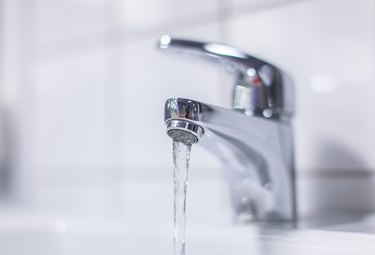Recommended Strategies for Addressing Low Water Pressure in Your Home
Recommended Strategies for Addressing Low Water Pressure in Your Home
Blog Article
How do you really feel in regards to Dealing with Low Water Pressure in Your Home?

Low water stress in your house can be a frustrating problem, affecting everything from bathing to washing dishes. If you're experiencing weak water circulation, there are a number of possible causes and solutions to explore. In this guide, we'll go over usual reasons for low tide stress and sensible actions to address the concern successfully.
Introduction to Low Water Pressure
Low water pressure takes place when the flow of water from your faucets, showers, and various other components is weak than normal. This can make everyday jobs a lot more tough and much less reliable. Understanding the root causes of low tide pressure is crucial to finding the best service.
Common Sources Of Low Water Pressure
Faulty Stress Regulatory Authorities
Pressure regulatory authorities are in charge of maintaining constant water stress in your home. If they malfunction, it can result in low tide stress or irregular flow throughout your house.
Metropolitan Water System Issues
In some cases, the problem lies outside your home. Metropolitan water supply problems, such as main line leakages or upkeep job, can temporarily minimize water stress in your location.
Pipeline Obstructions
Over time, pipelines can end up being clogged with mineral deposits, debris, or particles, limiting the circulation of water. This is a common issue in older homes with galvanized steel pipelines.
Rust
Deterioration within pipelines can lead to leakages and minimized water stress. Corrosion build-up can tighten water flow, especially in maturing plumbing systems.
Just How to Detect Low Water Stress
Inspecting Pipelines
Examine noticeable pipes for indications of leakages, rust, or clogs. Pay attention to any kind of uncommon sounds, such as banging or rattling pipes, which can indicate problems within the plumbing system.
Consulting with a Plumber
If you're not able to identify the reason for low tide stress, consider hiring a professional plumber to conduct an extensive assessment. They can identify underlying issues and recommend suitable solutions.
Checking Taps and Components
Begin by checking the water pressure at various taps and components throughout your home. If the problem is separated to particular locations, it may suggest localized issues.
Do It Yourself Solutions to Repair Low Tide Pressure
Flushing Hot Water Heater
Debris build-up in the water heater can restrict flow and lower performance. Flushing the storage tank periodically aids get rid of debris and maintain ideal efficiency.
Inspecting Stress Regulator
Make sure that the stress regulatory authority is operating appropriately. Adjusting or changing the regulatory authority can aid recover appropriate water stress throughout your home.
Cleaning Up Aerators and Showerheads
Mineral deposits can collect in aerators and showerheads, lowering water circulation. Remove and clean these components on a regular basis to improve water stress.
Cleaning Clogs in Piping
For minor clogs, try using a plumbing snake or chemical drain cleaner to clear obstructions in pipelines. Beware when using chemicals and follow security standards.
When to Call an Expert Plumber
If do it yourself initiatives fail to resolve the problem or if you think considerable plumbing troubles, it's best to seek assistance from a qualified plumber. They have the proficiency and devices to address complex problems securely and effectively.
Preventive Measures to Preserve Water Pressure
Setting Up a Stress Booster
Consider installing a pressure booster pump to improve water stress in areas with continually reduced flow. This can be especially helpful for multi-story homes or buildings with high-demand fixtures.
Tracking Water Use
Be mindful of water usage behaviors and avoid overtaxing the plumbing system. Easy modifications, such as incredible showers and laundry tons, can help maintain adequate water pressure.
Regular Maintenance
Arrange regular upkeep for your plumbing system to stop concerns such as corrosion, leakages, and clogs. Resolving small troubles early can aid prevent more significant repairs later.
Verdict
Managing low tide pressure can be discouraging, yet identifying the underlying reasons and executing ideal services can recover optimum flow throughout your home. Whether it's cleansing aerators, inspecting pipes, or speaking with a plumber, taking aggressive steps can ensure a steady supply of water for your daily demands.
How to Fix Low Water Pressure
Have you noticed the water pressure in your shower or taps seem a little weak? If so, the water pressure in your home may be lower than it should be.
Low water pressure can affect many areas of your home. You might notice it taking longer to fill the bathtub or washing machine or that you’re not getting the pressure you need from your garden hose.
These pressure changes can be sudden or may happen over time. It may take a little investigating to find the cause, but there’s usually an easy solution.
Testing Water Pressure in Your Home
One easy way to check water pressure at home is with a water pressure gauge. You can find one online or at a hardware or home improvement store.
Before you check the pressure, make sure the taps and appliances that use water are turned off. Then, connect the gauge to the exterior hose bib or tap.
Turn the tap up all the way and read the gauge to see the water pressure. If you don’t have an exterior tap, you can disconnect the hose of your washing machine and connect the water pressure gauge to it.
Make sure all your water-using appliances are turned off. Turn the faucet on high to read your home’s pressure or PSI.
If the idea of checking water pressure or dealing with plumbing issues on your own seems a bit daunting, you can call a professional plumbing service to handle the job.
They can help you find the root of your water pressure issues and determine the best solution to the problem.
Clear the Clogs
A clogged pipe is one of the most common issues that leads to low or no water pressure. Pipes can become clogged due to a buildup of mineral deposits.
This is especially true if you have hard water where you live. Even a small clog can reduce the pressure of water running through the pipes.
Clogs usually build up over time. People notice when it affects their showers or the appliances that use water every day.
There are products and tools for clearing clogs on your own or you can call a plumber. They have the expertise and the right tools to locate clogs and determine whether it’s better to repair or replace the pipe.
Clean or Replace Corroded Pipes
Do you live in an older home where the plumbing is decades old? If so, your pipes are probably prone to corrosion. This is especially true if the pipes are galvanised steel.
This material is likely to corrode after 20 years of use. Brass pipes average 40 to 70 years before corroding, while copper pipes are good for 50 years or more.
If you installed extra plumbing fixtures after building or moving into your home, there’s a good chance you could have corroded pipes. The more plumbing fixtures in the home, the harder your pipes have to work, and the more likely they will corrode.
It’s important to address pipe corrosion. Failing to fix the problem can lead to cracked pipes, major leaks, and water damage in your home.
Swapping out old plumbing pipes reduces the risk of corrosives. Updated plumbing produces cleaner and better-tasting water, too.
Seal the Leaks
Another cause of low water pressure could be a leak in the pipes or in the water line. Small cracks or holes leak water into unintended areas before the water can reach the various taps in your home.
If your basement or foundation has flooded, it’s a strong sign of leaking pipes. You can look for leaks by turning off the taps for a couple of hours. Then, check the water metre reading.
An increase may indicate a leak. To see or access the plumbing, check for wet spots or pooling water. If you find a leaking pipe, there could be more.
You may not be able to reach these spots on your own, so it’s a good idea to enlist the help of a professional plumber at this point. They can check all your pipes for leaks and repair or replace damaged ones to restore adequate water pressure.
It’s important to address water leaks right away. Standing water can lead to mould or mildew growing in your home.
Replace the Pressure Regulator
Do you have a pressure regulator in your house? It’s a valve that helps keep the water pressure entering your home at safe levels. A functioning regulator keeps the pressure constant and flowing at around 50 PSI.
High water pressure may damage your plumbing and lead to excess stress on your appliances that use water. When a pressure regulator fails, it can lead to an increase or decrease in pressure.
Sediment or debris in the value can cause a blockage. You can check the pressure regulator by attaching the pressure gauge to an outdoor spigot. If the pressure reads lower than the valve reported, the regulator may be faulty.
A plumbing expert can assess whether the pressure regulator is working for your home. It’s important to replace a failed regulator.
Instal a Booster Pump
Sometimes you may look everywhere to discover the cause of low water pressure but not find an answer. Talk to your neighbours to see if they’re having similar issues.
If other homeowners near you are experiencing water pressure problems, installing a booster pump may be a good solution. It can increase water pressure to the main supply line that runs to your home’s system.
An experienced pro in UK plumbing issues can help you install a booster and restore the water pressure to your house.
How to Fix Low Water Pressure
If you notice the water pressure in your home is less than what it should be, there are a variety of possible problems and solutions. If you’re not a plumbing expert or don’t have the time to spare for DIY plumbing issues, call the pros instead.
At PM247, we know how to improve low water pressure in your home. Simply tell us the plumbing issue you’re having and we will take it from there.
For over 20 years, we’ve provided professional plumbing, drainage, roofing, heating, and electrical services to our customers. We would love to help you, too!
https://www.pm247.co.uk/blog/how-improve-low-water-pressure/

Do you like more info about ? Place a remark down below. We will be delighted to see your opinions about this blog. In hopes to see you back again in the near future. Remember to pause to share this blog posting if you enjoyed it. I enjoy reading our article about Dealing with Low Water Pressure in Your Home.
Article Report this page